Saudi Arabia prepares for World Cup 2034
23 November 2023
 This package also includes:
This package also includes:
> World Cup 2034 shows Saudi goals can be achieved
> The frontrunners for the Saudi World Cup 2034 stadiums
> Read the December 2023 edition of MEED Business Review

It happened so fast. One month after saying it would bid to host football’s 2034 Fifa World Cup, Saudi Arabia was effectively confirmed as the host after the only other potential bidder for the tournament withdrew from the race.
Fifa had invited member associations from the Asian Football Confederation and Oceania Football Confederation to bid for the 2034 event by the end of October.
Saudi Arabia formally announced in early October that the Saudi Arabian Football Federation will lead its bid to host the tournament. Then on 31 October, which was the deadline for submitting bids, Football Australia issued a statement saying that the country will not bid for the 2034 tournament.
“We have explored the opportunity to bid to host the Fifa World Cup and – having taken all factors into consideration – we have reached the conclusion not to do so for the 2034 competition,” said the body that governs the sport in Australia.
 Bidding process
Bidding process
The official selection of Saudi Arabia as the 2034 host is expected to be confirmed in late 2024.
“The Fifa administration will conduct thorough bidding and evaluation processes for the 2030 and 2034 editions of the Fifa World Cup, with the hosts to be appointed by Fifa Congresses expected to take place by the fourth quarter of 2024,” Fifa said in its statement on 31 October, which confirmed Saudi Arabia as the sole bidder for the 2034 World Cup.
During the bidding process, “the Fifa administration will conduct a targeted dialogue with bidders, to ensure complete, comprehensive bids are received and evaluated against the minimum hosting requirements as also previously approved by the Fifa Council,” the statement continued.
“This dialogue will focus on the defined priority areas of the event vision and key metrics, infrastructure, services, commercial and sustainability and human rights.”
The bid must include a minimum of 14 stadiums, of which at least four should be existing structures
Transformative effect
Experience from previous World Cups, including the most recent in Qatar in 2022, has shown how transformative the tournament can be for a country. “There is obviously an event at a particular point in time, but we have learnt not to look at it as an event itself, because there are all these activities that happen before and beyond the event,” says Kourosh Kayvani, partner at consultancy HKA.
“It is really about a programme of change in the country.
“This includes social change, economic change, and all of these things are ultimately achieved through the process of working towards the event, delivering it and then legacy.”
Building infrastructure
The most prominent part of the infrastructure is the stadiums.
The bid must include a minimum of 14 all-seater stadiums, of which at least four should be existing structures. The capacity must be at least 80,000 seats for the opening and final matches, and for the semi-finals there must be at least 60,000 seats. For all other matches, at least 40,000 seats are needed.
Saudi Arabia is already upgrading and building stadiums as part of its preparations for hosting the 2027 AFC Asian Cup. In June, the Sports Ministry invited construction firms to submit prequalification documents for contracts to build sports stadiums as part of its SR10.1bn ($2.7bn) capital projects programme.
The schemes are split into four elements. The largest of these, and the most immediate, is the construction of a new stadium to the north of Riyadh and the upgrade of five existing football stadiums.
The projects will increase the capacity of the King Fahd Stadium in Riyadh to 92,000 seats, expand the seating capacity of Riyadh’s Prince Faisal bin Fahd Stadium to 45,000, increase the capacity of Prince Mohammed bin Fahd Stadium in Dammam to 30,000 seats and raise the seating capacity of Prince Saud bin Jalawi Stadium in Al-Khair to 45,000. New Riyadh Stadium, a sustainable, 45,000-seater venue in the north of Riyadh, will also be constructed.
Other football stadium projects are also progressing. In October, the Saudi Arabian Football Federation awarded an early works contract to the local Al-Osais Contracting for the construction of its new stadium in Dammam. It will have the capacity to accommodate 40,000 spectators.
The new stadium will be built in the Dammam Sports City area, where the facilities of the Al-Ettifaq Football and Al-Nahda Club teams are based.
Consultants have also been invited by the Public Investment Fund (PIF) to bid for a contract to provide project and asset management services for the operation and upgrade of its King Abdullah Sports City Stadium on the outskirts of Jeddah. It is the home ground of football team Al-Ittihad Saudi Club, which won its ninth championship in the 2022-23 season.
The 62,000-seater stadium was built by a joint venture of Belgium’s Six Construct and the local Al-Muhaidib Trading & Contracting. The team was awarded the estimated SR2bn ($533m) contract in 2011. Saudi Aramco developed the stadium on behalf of the government.
In July 2022, Jeddah Central Development Company signed design and engineering contracts for the stadium at the Jeddah Central project. The design contract was awarded to GMP International and the engineering contract was awarded to Khatib & Alami.
A stadium built 300 metres above the ground between the two buildings that form part of The Line at Neom is also planned and has featured in Neom’s marketing campaigns.
As well as stadiums, Saudi Arabia will also have to invest in supporting infrastructure such as transportation networks and hotels. For the Qatar World Cup, projects including the Doha Metro network and a raft of hotel and resort developments were completed ahead of the tournament.
“It was the first time that the World Cup was held in one city,” says Alexey Milovanov, who oversaw the construction of eight stadiums in Qatar for the 2022 tournament and, before that, was involved in building stadiums for the 2018 Fifa World Cup in Russia.
Cities across the kingdom will host the Saudi World Cup, which will make it more like the 2014 Brazil World Cup and the 2018 Russia World Cup, which were hosted by countries with large land areas and multiple centres of population.
“For these World Cups you have to think about how to move people from one city to another, what the accommodation is like in each city, and then there are all the security requirements,” Milovanov says.
Saudi Arabia will also have to invest in supporting infrastructure such as transportation networks and hotels
Football investments
Becoming the sole bidder for the 2034 World Cup is the latest milestone in Saudi Arabia’s concerted strategy to become a leading force in the growing business of global football. Speaking at the Future Investment Forum in Riyadh in October, Fifa president Gianni Infantino described the sport as a $200bn-a-year economy.
The first clear sign of Riyadh’s football-focused strategy came in October 2021 when a consortium led by the PIF completed the full acquisition of UK football club Newcastle United from St James Holdings.
The investment group, which also includes PCP Capital Partners and RB Sports & Media, finalised the long-awaited deal after having secured approval from the English Premier League. The deal was estimated to be worth $415m.
 Saudi football vision goes global
Saudi football vision goes global
In November 2022, Crown Prince Mohammed bin Salman bin Abdulaziz al-Saud attended the World Cup opening ceremony in Qatar. He sat with and embraced Qatari Emir Sheikh Tamim bin Hamad al-Thani during the event, a move that emphasised the strengthening ties between the two nations.
A few days later, the Saudi national team stunned the world when it beat event tournament winner Argentina 2-1 during a group stage match.
Portuguese footballer Cristiano Ronaldo joined the Saudi Arabian club Al-Nassr in December 2022. The club reportedly paid over $200m to sign the player. Within days, Al-Nassr’s Instagram account had grown from 800,000 followers to over 6 million.
In June 2023, PIF moved to boost the popularity of the kingdom’s domestic league by investing in four Saudi football clubs – Al-Ittihad, Al-Ahli, Al-Nassr and Al-Hilal. They were converted into companies, predominantly owned by PIF and complemented by non-profit foundations.
The move was followed by a summer of intense football transfer activity, which included Brazilian star Neymar signing for Al-Hilal.
 Morocco plans six stadium projects for 2030 World Cup
Morocco plans six stadium projects for 2030 World Cup
More tournaments
The Middle East has more to cheer about than just a Saudi World Cup. Morocco, as part of a joint bid with Spain and Portugal, has been confirmed as the sole bidder to host the 2030 World Cup.
Fifa has confirmed that the bid is the sole candidate for 2030, and to celebrate 100 years since the first World Cup in 1930, which was held in Uruguay, three matches of the 2030 tournament will be hosted in South America.
For football fans in the region who cannot wait that long, Saudi Arabia will host the 20th Fifa Club World Cup in December – a tournament contested by the best club teams from each continent.
Main image: Portugal captain Cristiano Ronaldo joined the Saudi Arabian club Al-Nassr in December 2022
Exclusive from Meed
-
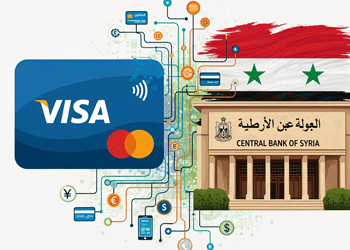 Visa agrees to support digital payments in Syria
Visa agrees to support digital payments in Syria5 December 2025
-
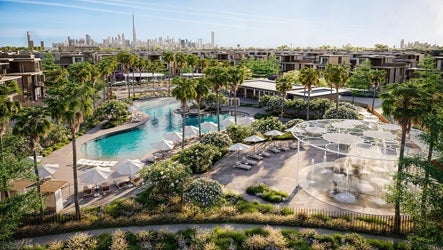 Meraas announces next phase of Nad Al-Sheba Gardens
Meraas announces next phase of Nad Al-Sheba Gardens5 December 2025
-
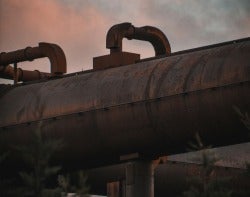 Frontrunner emerges for Riyadh-Qassim IWTP
Frontrunner emerges for Riyadh-Qassim IWTP5 December 2025
-
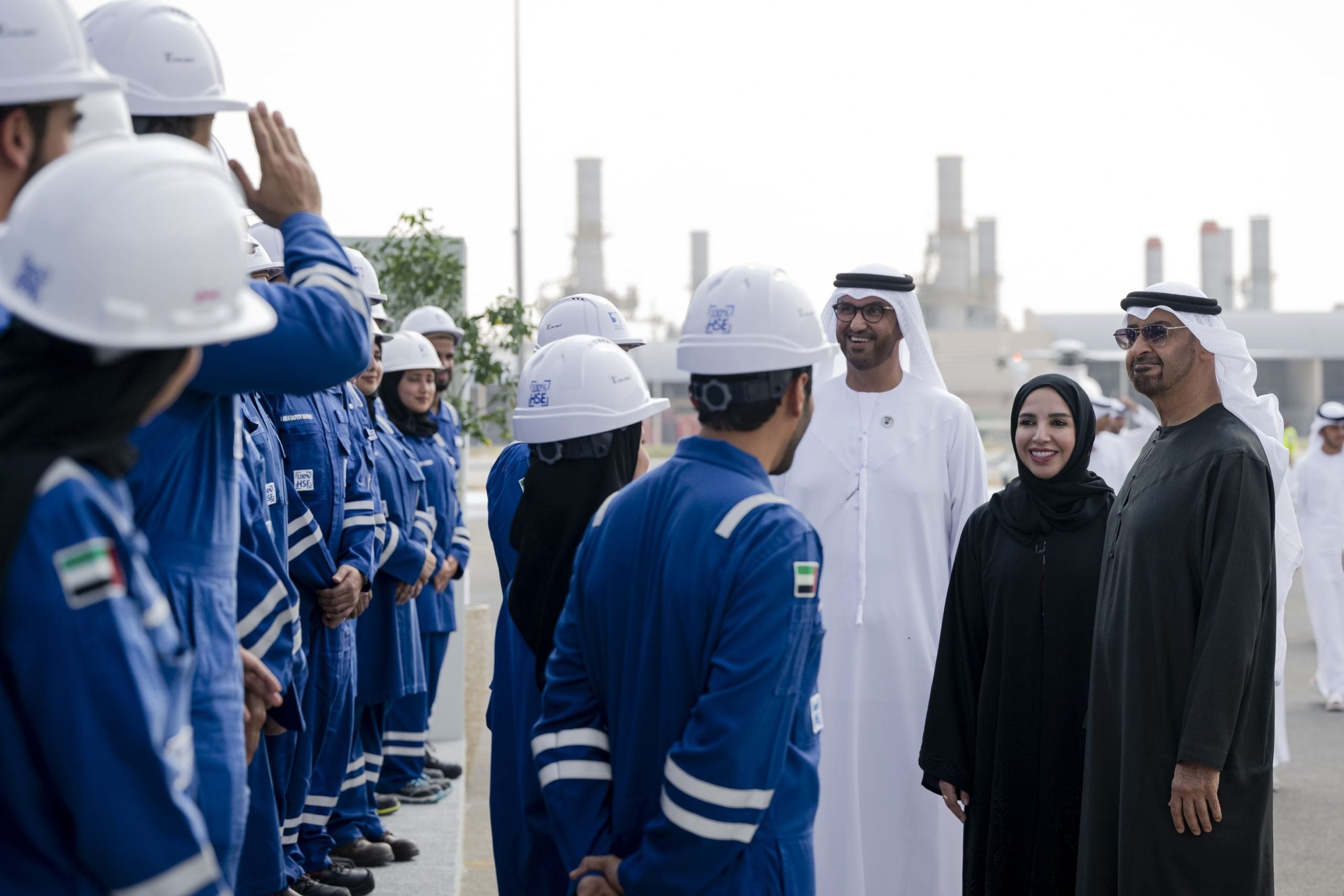 Adnoc creates new company to operate Ghasha concession
Adnoc creates new company to operate Ghasha concession5 December 2025
-
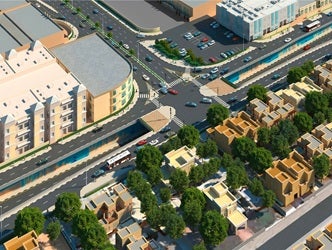 Dubai RTA announces Al-Wasl road development project
Dubai RTA announces Al-Wasl road development project5 December 2025
All of this is only 1% of what MEED.com has to offer
Subscribe now and unlock all the 153,671 articles on MEED.com
- All the latest news, data, and market intelligence across MENA at your fingerprints
- First-hand updates and inside information on projects, clients and competitors that matter to you
- 20 years' archive of information, data, and news for you to access at your convenience
- Strategize to succeed and minimise risks with timely analysis of current and future market trends

Related Articles
-
 Visa agrees to support digital payments in Syria
Visa agrees to support digital payments in Syria5 December 2025
Visa and the Central Bank of Syria have agreed on a strategic roadmap that will allow the US-based card and digital payments company to begin operations in Syria and support the development of a modern digital payments system.
Under the agreement, Visa will work with licensed Syrian financial institutions under a phased plan to establish a secure foundation for digital payments.
The early stages will involve Visa supporting the central bank in issuing Europay, Mastercard and Visa (EMV)-compliant payment cards and enabling tokenised digital wallets – bringing the country in line with internationally interoperable standards.
Visa will also provide access to its platforms, including near-field communication (NFC) and QR-based payments, invest in local capacity building and support local entrepreneurs seeking to develop solutions leveraging Visa’s global platform.
“A reliable and transparent payment system is the bedrock of economic recovery and a catalyst that builds the confidence required for broader investment to flow into the country,” noted Visa’s senior VP for the Levant, Leila Serhan. “This partnership is about choosing a path where Syria can leapfrog decades of legacy infrastructure development and immediately adopt the secure, open platforms that power modern commerce.”
The move marks one of the most significant steps yet in Syria’s slow and uneven return to the formal global financial system and carries implications that reach beyond just payments technology.
It lays the groundwork for overturning more than a decade of financial isolation in which Syria has operated largely outside global banking and settlement networks.
Visa’s entry will not erase all existing barriers – as many restrictions remain in force and will continue to shape what is practically possible – but its support signals a reopening of channels that could smooth Syria’s reintegration into financial networks.
The involvement of the US-based payments provider is also a further tacit sign of the US government’s enthusiastic bear hug of the new post-Assad Syrian government under President Ahmed Al-Sharaa.
For investors assessing long-term opportunities, the presence of a globally recognised payments operator will provide reassurance that Syria’s financial system is returning to international norms, and the security and transparency that comes with it.
https://image.digitalinsightresearch.in/uploads/NewsArticle/15207198/main.gif -
 Meraas announces next phase of Nad Al-Sheba Gardens
Meraas announces next phase of Nad Al-Sheba Gardens5 December 2025
Dubai-based real estate developer Meraas Holding, which is part of Dubai Holding, has announced the eleventh and final phase of its Nad Al-Sheba Gardens residential community in Dubai.
It includes the development of 210 new villas and townhouses and a school, which will be located at the northwest corner of the development.
The latest announcement follows Meraas awarding a AED690m ($188m) contract for the construction of the fourth phase of the Nad Al-Sheba Gardens community in May, as MEED reported.
The contract was awarded to local firm Bhatia General Contracting.
The scope of the contract covers the construction of 92 townhouses, 96 villas and two pool houses.
The contract award came after Dubai-based investment company Shamal Holding awarded an estimated AED80m ($21m) contract to UK-based McLaren Construction last year for the Nad Al-Sheba Gardens mall.
The project covers the construction and interior fit-out of a two-storey mall, covering an area of approximately 12,600 square metres.
The UAE’s heightened real estate activity is in line with UK analytics firm GlobalData’s forecast that the construction industry in the country will register annual growth of 3.9% in 2025-27, supported by investments in infrastructure, renewable energy, oil and gas, housing, industrial and tourism projects.
The residential construction sector is expected to record an annual average growth rate of 2.7% in 2025-28, supported by private investments in the residential housing sector, along with government initiatives to meet rising housing demand.
https://image.digitalinsightresearch.in/uploads/NewsArticle/15206904/main.jpg -
 Frontrunner emerges for Riyadh-Qassim IWTP
Frontrunner emerges for Riyadh-Qassim IWTP5 December 2025

Saudi Arabia’s Vision Invest has emerged as frontrunner for the contract to develop the Riyadh-Qassim independent water transmission pipeline (IWTP) project, according to sources.
State water offtaker Saudi Water Partnership Company (SWPC) is preparing to award the contract for the IWTP "in the coming weeks", the sources told MEED.
The project, valued at about $2bn, will have a transmission capacity of 685,000 cubic metres a day. It will include a pipeline length of 859 kilometres (km) and a total storage capacity of 1.59 million cubic metres.
In September, MEED reported that bids had been submitted by two consortiums and one individual company.
The first consortium comprises Saudi firms Al-Jomaih Energy & Water, Al-Khorayef Water & Power Technologies, AlBawani Capital and Buhur for Investment Company.
The second consortium comprises Bahrain/Saudi Arabia-based Lamar Holding, the UAE's Etihad Water & Electricity (Ewec) and China’s Shaanxi Construction Installation Group.
The third bid was submitted by Saudi Arabia's Vision Invest.
It is understood that financial and technical bids have now been opened and Vision Invest is likely to be awarded the deal.
The Riyadh-based investment and development company made a "very aggressive" offer, one source told MEED.
In November, the firm announced it had sold a 10% stake in Saudi Arabia-based Miahona as part of a strategy to reallocate capital "towards new and diversified investments".
The company did not disclose which projects the capital might be reallocated towards.
As MEED recently reported, Vision Invest is also bidding for two major packages under Dubai's $22bn tunnels programme in a consortium with France's Suez Water Company.
The Riyadh-Qassim transmission project is the third IWTP contract to be tendered by SWPC since 2022.
The first two are the 150km Rayis-Rabigh IWTP, which is under construction, and the 603km Jubail-Buraydah IWTP, the contract for which was awarded to a team of Riyadh-based companies comprising Al-Jomaih Energy & Water, Nesma Group and Buhur for Investment Company.
Like the first two IWTPs, the Riyadh-Qassim IWTP project will be developed using a 35-year build-own-operate-transfer contracting model.
Commercial operations are expected to commence in the first quarter of 2030.
https://image.digitalinsightresearch.in/uploads/NewsArticle/15206609/main.jpg -
 Adnoc creates new company to operate Ghasha concession
Adnoc creates new company to operate Ghasha concession5 December 2025
Register for MEED’s 14-day trial access
The board of directors of Abu Dhabi National Oil Company (Adnoc Group) has approved the establishment of a new company to operate the Ghasha offshore sour gas concession in Abu Dhabi waters.
The decision to create the new entity, to be called Adnoc Ghasha, was taken during a recent meeting of Adnoc Group’s board in Abu Dhabi, which was chaired by Sheikh Mohamed Bin Zayed Al-Nahyan, UAE President and Ruler of Abu Dhabi.
Adnoc Group owns and operates the Ghasha concession, holding the majority 55% stake. The other stakeholders in the asset are Italian energy major Eni with a 25% stake, Thailand’s PTTEP Holding, which holds a 10% interest, and Russia’s Lukoil, owning the remaining 10% stake.
The Ghasha concession consists of the Hail and Ghasha fields, along with the Hair Dalma, Satah al-Razboot (Sarb), Bu Haseer, Nasr, Shuwaihat and Mubarraz fields.
Adnoc expects total gas production from the concession to ramp up to more than 1.8 billion cubic feet a day (cf/d) before the end of the decade, along with 150,000 barrels a day of oil and condensates. This target will mainly be achieved through the Hail and Ghasha sour gas development project.
In October 2023, Adnoc and its partners awarded $16.94bn of engineering, procurement and construction (EPC) contracts for its Hail and Ghasha project – the biggest capital expenditure made by the Abu Dhabi energy company on a single project in its history.
Adnoc awarded the onshore EPC package to Italian contractor Tecnimont, while the offshore EPC package was awarded to a consortium of Abu Dhabi’s NMDC Energy and Italian contractor Saipem.
The $8.2bn contract relates to EPC work on offshore facilities, including facilities on artificial islands and subsea pipelines.
The Hail and Ghasha development will also feature a plant that will capture and purify carbon dioxide (CO2) emissions for sequestration (CCS), in line with Adnoc’s committed investment for a carbon capture capacity of almost 4 million tonnes a year (t/y). The CO2 recovery plant will have a total capacity to capture and store 1.5 million t/y of emissions from the Hail and Ghasha scheme.
Prior to reaching the final investment decision on the Hail and Ghasha project in 2023, the Ghasha concession partners, led by Adnoc, awarded two EPC contracts worth $1.46bn in November 2021 to execute offshore and onshore EPC works on the Dalma gas development project. The project will enable the Dalma field to produce about 340 million cf/d of natural gas.
https://image.digitalinsightresearch.in/uploads/NewsArticle/15206382/main2754.jpg -
 Dubai RTA announces Al-Wasl road development project
Dubai RTA announces Al-Wasl road development project5 December 2025
Register for MEED’s 14-day trial access
Dubai’s Roads & Transport Authority (RTA) has announced the Al-Wasl Road upgrade project, spanning 15 kilometres (km) from the intersection with Umm Suqeim Street to the junction with 2nd December Street.
The scheme includes upgrading six intersections – Al-Thanya, Al-Manara, Umm Al-Sheif, Umm Amara, Al-Orouba and Al-Safa streets – along with upgrading Al-Thanya Street and constructing five tunnels totalling 3.8km.
A new tunnel will be built at the intersection with Al-Manara Street. It will consist of three lanes and split into two routes: two lanes from Sheikh Zayed Road to Jumeirah Street and two lanes from Sheikh Zayed Road to Umm Suqeim Street, with a total capacity of 4,500 vehicles per hour.
The project also includes a 750m-long tunnel on Umm Al-Sheif Street, comprising two lanes from Sheikh Zayed Road to Jumeirah Street, accommodating up to 3,200 vehicles per hour.
A tunnel will be constructed at the intersection of Al-Wasl Road with Umm Amara Street, featuring two lanes in each direction, with a total length of 700m and a combined capacity of 6,400 vehicles per hour.
The road will also be widened from two to three lanes in each direction.
The project is expected to reduce travel times along Al-Wasl Road by 50% and increase capacity from 8,000 to 12,000 vehicles per hour in both directions.
Planning for growth
In March 2021, the government launched the Dubai 2040 Urban Master Plan. Its launch referenced studies indicating that the emirate’s population will reach 5.8 million by 2040, up from 3.3 million in 2020. The daytime population is set to increase from 4.5 million in 2020 to 7.8 million in 2040.
In December 2022, Sheikh Mohammed Bin Rashid Al-Maktoum, Vice President and Prime Minister of the UAE and Ruler of Dubai, approved the 20-Minute City Policy as part of the second phase of the Dubai 2040 Urban Master Plan.
In addition to the road projects, the RTA’s Dubai Metro Blue Line extension forms part of Dubai’s plans to improve residents’ quality of life by cutting journey times, as outlined in the policy.
The policy aims to ensure that residents can meet 80% of their daily requirements within a 20-minute journey time, on foot or by bicycle. This goal will be achieved by developing integrated service centres with all necessary facilities and by increasing population density around mass transit stations.
https://image.digitalinsightresearch.in/uploads/NewsArticle/15205950/main.jpg



